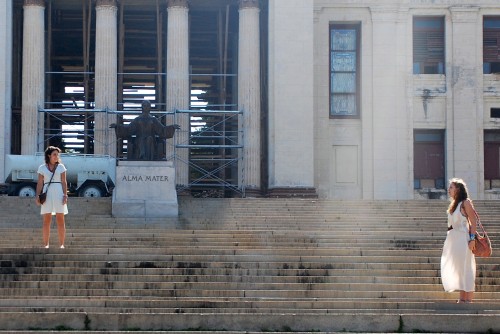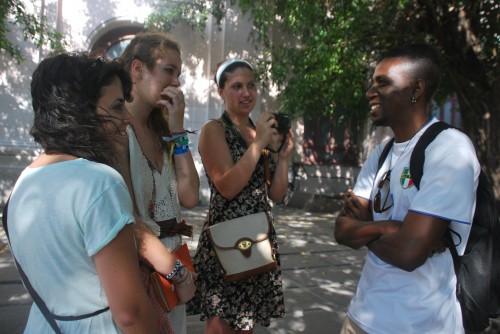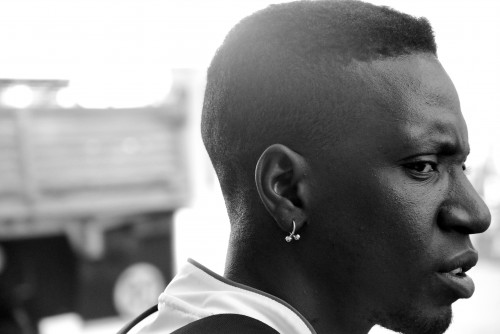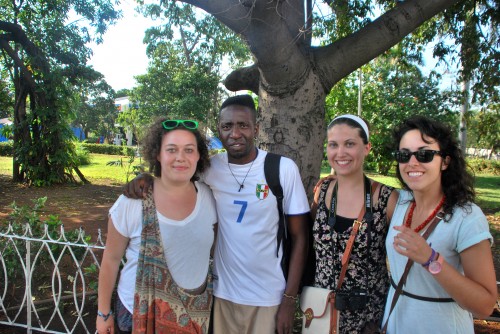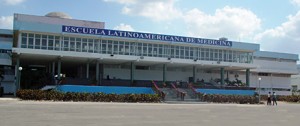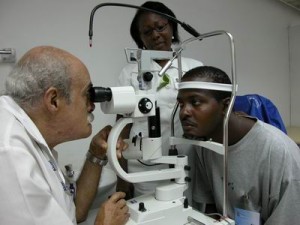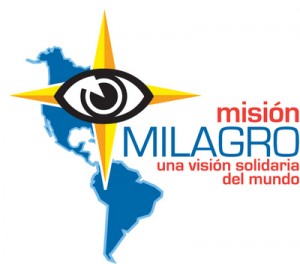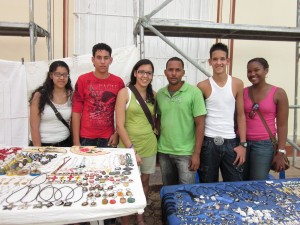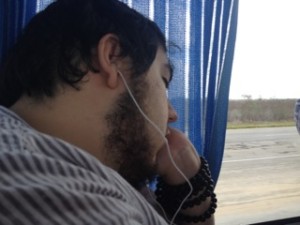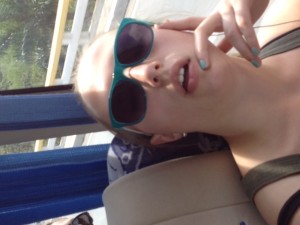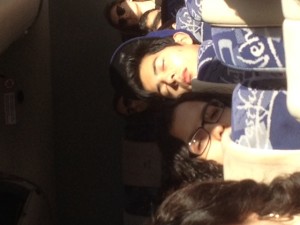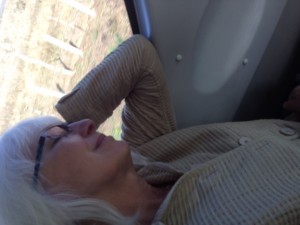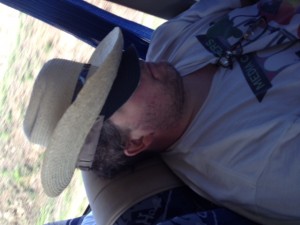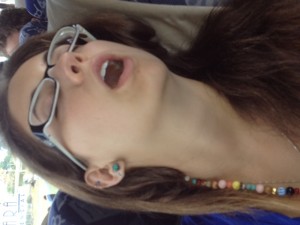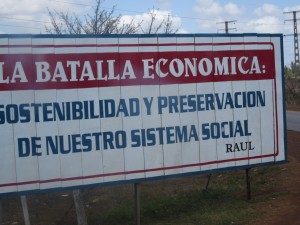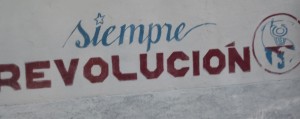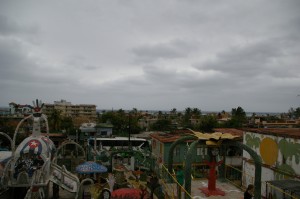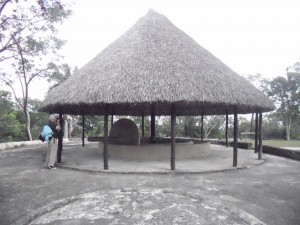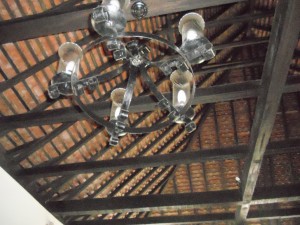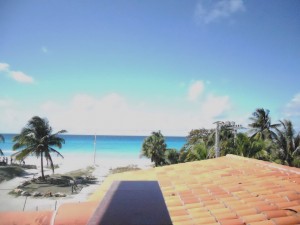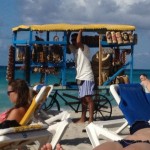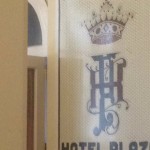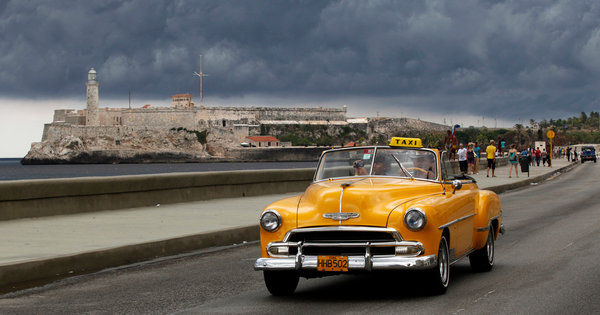To start this post, I would like to quote from my journal because I do not know if I can capture what I was and still am thinking in the same way otherwise. This took place on our first full night in Havana (not the night we arrived which was after 3:00 am).
“Anna and I tried to go out with some others but the guard at the door [of our hotel] discouraged us because there was a blackout. I hadn’t realized — I thought there was an acute lack of streetlights as an energy/austerity thing. Of course our hotel and many around us have generators. We went up to the roof and looked around. Except for a couple spots of what I assume is grouped hotels, it was dark.”
For the record, I have since come to understand that just because Havana is dark does not mean that it is dangerous. Even when there isn’t a blackout, there isn’t much light on the street but people still don’t bother you. I can’t remember who said this to me, but our safety was explained to me this way; many of the people of Old Havana depend on tourist money to make ends meet and if someone attacks a tourist, they are hurting their entire neighborhood by driving money away so it something that usually does not happen.
Periodic blackouts is something the average Cuban has come to live with over the years. This was a much bigger problem early in the Special Period. At one point in 1994, Havanaites were dealing with up to ten hours a day of blackouts. Yet even as the country has made somewhat of an economic recovery, energy and electricity is still a major problem, as we saw with our own eyes. Dissident Cuban blogger Yoani Sanchez has written of electricity shortages and believes them to be a sign of a return to the shortages of the early 1990s. Electricity is not the only scarcity we experienced in Cuba that the average citizen of the United States does not have to worry about. There is an acute lack of toilet paper in Cuba, a problem one would not expect to experience in a country that is bouncing back. The hurricanes that hit the island in 2009 seriously effected the amount of raw materials on the island needed to make toilet paper. Cuba has also not been immune to the effects of the worldwide recession which has hurt its ability to import toilet paper (as well as pay for oil needed for energy).
The lack of constantly available electricity and of toilet paper are obviously very problematic. They show an inability by the Cuban government to provide the most basic things for their people. This lacking does not only apply to these two things; many food stuffs are limited to your average Cuban as well and access to many luxuries depends on whether or not one has relatives in Miami. Yet the shortages have not seemed enough to dull Cuban pride in the revolution. My classmates were very active in speaking to Cuban people (more active than I was unfortunately) and what I’ve gained from their conversations is that Cuba is filled with people who are frustrated some of whom truly want to leave Cuba and never come back, but others are still committed to the ideals of the revolution and willing to stay and deal with the many inconveniences.
Yoel controversially spoke to us about a feeling amongst Cubans that even when they go to sleep hungry, they take comfort in the knowledge that they are not the only ones hungry and that every one else is feeling the same way. Increasingly though, that is not the case and that is what makes me worry about the survival of the Cuban Revolution. We have talked a lot in class about the way that some Cubans, specifically light-skinned Cubans and mulatta women, benefit disproportionately from the tourist industry but I wonder how Cubans see the tourists. As I looked across a largely-pitch-black Havana that night, I wondered to myself,
“what it must feel like to be a Cuban person, lying in the dark and knowing that we have light because we’re foreign and bring in foreign capital. How can the revolution survive when the people don’t have the basics but see that even in their own country, others do and receive special treatment?. . . Passion and ideology can only go so far. If Cuba starts going down the road of some Latin American countries [such as tourist havens in Mexico] where the people are desperate but foreigners have everything right in their faces, another revolution must happen eventually if only because this is what caused the current revolution in the first place. Cuba has to be a good place for Cubans to be.”
I wonder how much the average Cuban resents tourists for their wealth or how much they resent their government for giving the tourists things they cannot give their own people. In our state-owned hotels, we had everything we needed.
When we were leaving Havana, we were asked to give any toilet paper we had left to our bus driver Duniel or our junior tour guide Adrianna because they could get it to people who needed it. I couldn’t help but wonder if those people were Duniel and Adrianna themselves, economically privileged as they are since they are involved in the tourist industry. This disparity must be addressed before the unequal distribution becomes enough to tip over a government that, truth be told, I do not completely ideologically disagree with.
Sources:
http://search.proquest.com/docview/303738328
http://www.huffingtonpost.com/2009/08/11/cuban-economy-worsens-cit_n_256588.html
http://www.huffingtonpost.com/yoani-sanchez/the-ghost-of-power-cuts-p_b_223552.html
